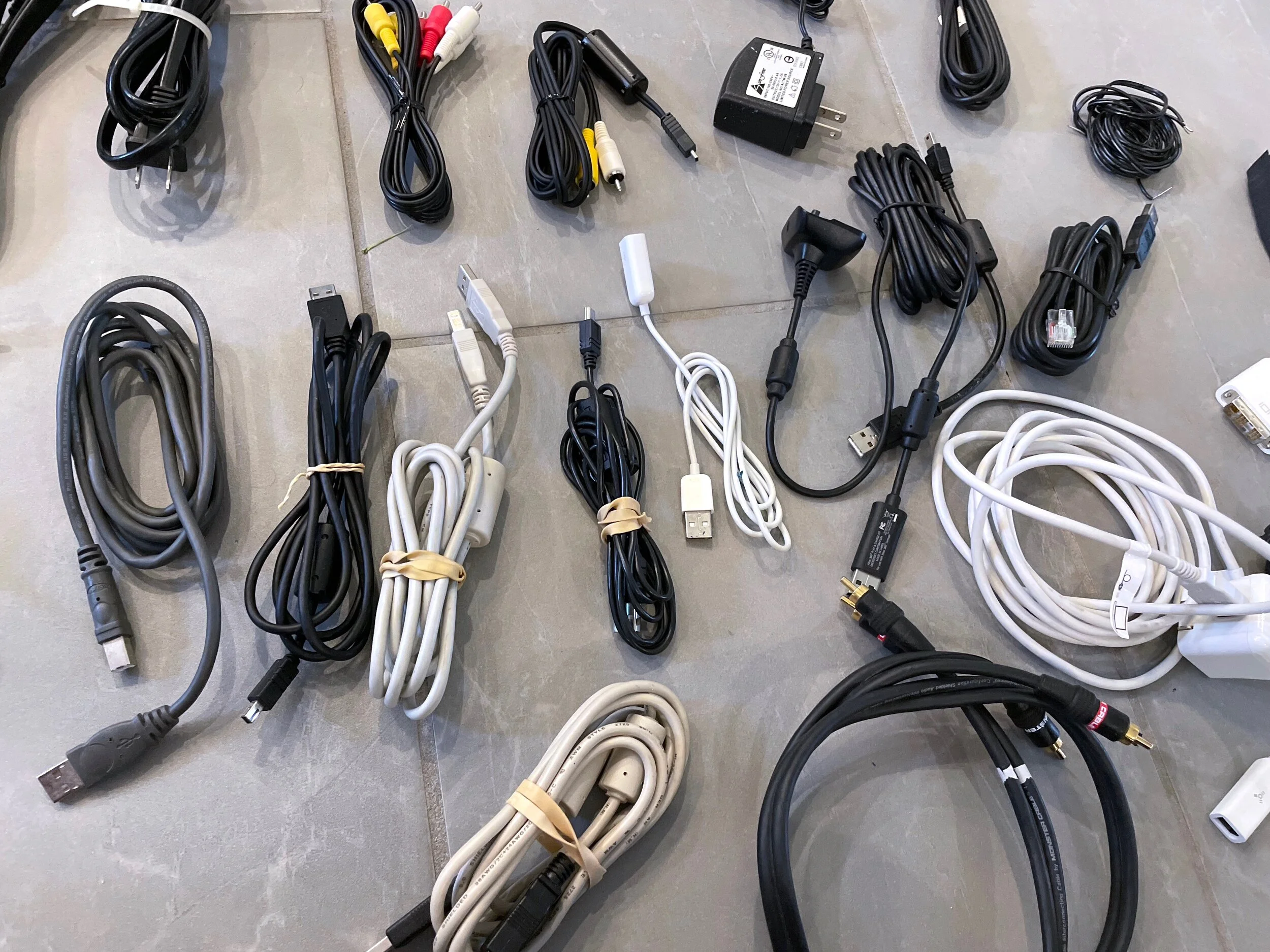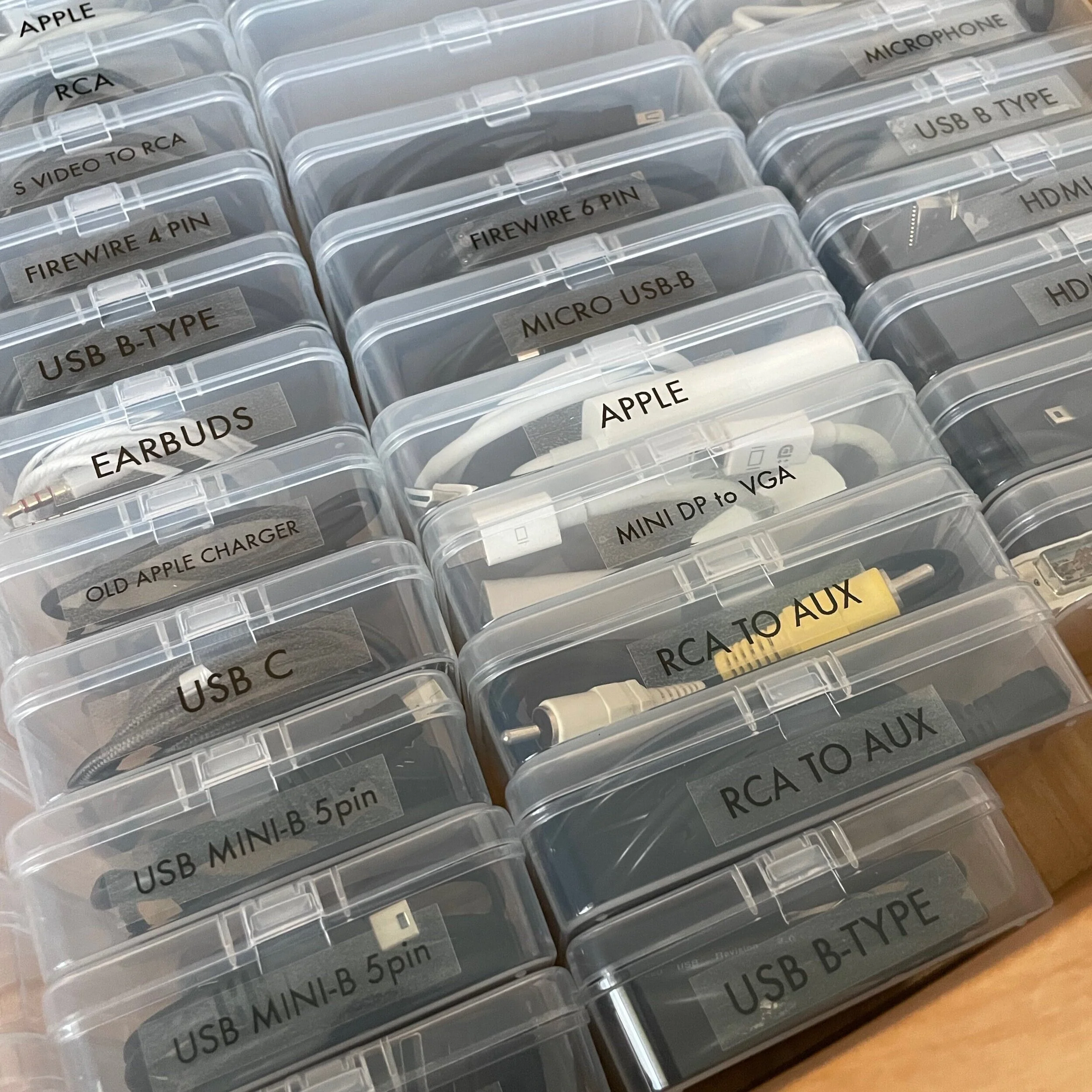If You Can’t Cut the Cord, Store It
When you buy something through our retail links, we may earn commission.
Our homes are overrun with cords, wires, and cables—for phones, tablets, computers, gaming systems, electronic tools, and other small devices—and the mess they create when not in use can get out of control.
We might not even know what most of these are used for, yet family members may insist they need them and that we should under no circumstances get rid of them.
Left unorganized, they become a tangled mess, and despite having every cord imaginable, we often can’t find what we’re looking for, which sometimes results in unnecessarily buying yet another cord.
I recently tackled the task of organizing our cords. After doing an initial purge, which involved giving away and recycling duplicates or cords we no longer needed, I searched for containment and storage options.
The solution that worked best for my family involved placing each cord in an individual container and labeling the type or specific use on the outside of each case.
Because labeling is key to any organization system, I wanted to make sure to have the proper information on each of the cases. So to avoid unspecific or catchall phrases (since I’m pretty sure “thingamajig” is not an especially helpful designation), I even did some research and found great sites and blogs that offered information on identifying cords and their uses.
You may have limited storage space or may be able get by with keeping far fewer cords, but the basic strategies to getting our tangled messes under control are always the same:
Edit your cord collections by donating or properly disposing of duplicate or unnecessary cords.
Neatly wrap and contain. There are lots of cord wraps on the market—a simple Amazon search will offer numerous choices. You can even buy options that will allow you to color-code and/or label the tie itself.
Properly identify and label.
Create a designated spot for all of your cords—whether it’s in a drawer or storage bin.
Regularly edit your cords and cables. If you no longer own the device, you probably don’t need to keep its cord.
Once you untangle the mess and create a system that works for your household, you will be much more likely to maintain the order you’ve achieved.


